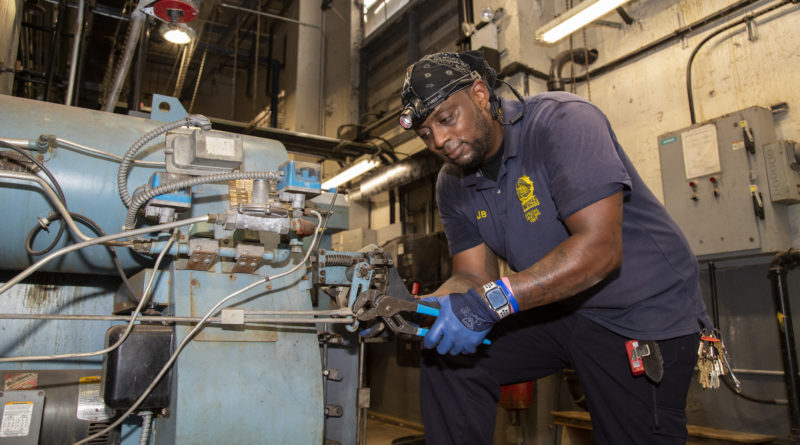NYCHA Prepares for the Extremely Cold Weather
NYCHA announced on January 20 that it will activate its virtual Emergency Operations Center (EOC) for the third time this heat season from 8 a.m. and 8 p.m. on Friday, January 21 and Saturday, January 22 to centralize efforts and respond to extremely low temperatures citywide.
Regional temperatures on Friday are expected to dip to 16 degrees (with a real feel of 4 degrees due to the wind chill) and temperatures on Saturday are expected to dip to 15 degrees (with a real feel of 4 degrees due to the wind chill).
We encourage residents to immediately submit work order requests for concerns or problems with heat or hot water – so NYCHA staff can quickly identify developments that may be experiencing heat issues – by using MyNYCHA or calling the Customer Contact Center at 718-707-7771.
NYCHA’s Office of Emergency Management manages the virtual Emergency Operations Center, which provides heating response teams (in addition to the Authority’s 24/7 “heat desk”) and coordinates efforts from the Operations, Heating, Technical Services, Community Engagement, Intergovernmental Affairs, Communications, and Emergency Services departments to minimize the extent of unplanned heat and hot water outages. The EOC also enables NYCHA staff to track, monitor, and report all heat complaints and outages.
The EOC also coordinates New York City Emergency Management (NYCEM) and other City agencies to provide safety and preparedness information to NYCHA residents and employees.
If needed, warming centers may be activated across the five boroughs to accommodate impacted residents. NYCHA works with partner City agencies such as the Department for the Aging and the Department of Youth & Community Development to open these warming centers.
NYCHA developments will be fully staffed by both development staff and third-party partners to monitor heating infrastructure, and emergency staff will be on call to address any heat-related service interruptions. Eight mobile boilers are also pre-positioned around the city for rapid installation in case any extreme issues arise at NYCHA developments.
Each year, beginning October 1, all New York City building owners must maintain an indoor temperature of at least 68 degrees between 6 a.m. and 10 p.m. when it’s below 55 degrees outside. From 10 p.m. to 6 a.m., indoor temperature must be at least 62 degrees, regardless of the temperature outside. Hot water must be kept at a minimum temperature of 120 degrees at the source year-round.
NYCHA’s 624 full-time heating staff include heating plant technicians, maintenance workers, plumbers, oil burner specialists, electricians and electrician’s helpers, and their supervisors; they maintain systems that span boiler plants, heat distribution pipes, and apartment radiators.
NYCHA also has nearly 1,400 boilers, about 1,800 pieces of distribution equipment, and around 1,700 water heaters at our nearly 2,200 buildings across the city.
Residents should contact NYCHA when:
- The temperature is out of range: The temperature in their apartment should never fall below 68 degrees during the day or 62 degrees at night.
- They have hot pipes and cold radiators: If the riser pipes are hot and the radiator is cold, residents should first make sure the hand valve is open (to the left). If the valve is open and the radiator is still cold, residents should tell NYCHA staff and ask them to change the radiator trap.
- The window is not closing properly: Residents should request window repair if the window is not closing all the way or if air is coming in above, below, or between the sashes.
- Steam is leaking into the apartment: Residents should ask NYCHA staff to fix all steam leaks immediately.
- The building’s front entrance door does not fully close.
Some best practices for helping to keep apartments warm during the winter months include:
- Keeping windows fully closed, top to bottom, because open or leaky windows can make you feel cold even if the heating system is working as it should. If they feel air, residents should contact NYCHA.
- Consider removing the window air conditioner, or covering it, for the winter. Leaving an air conditioner installed in the window is the same as having a six-inch hole in your wall. If residents cannot remove and store their air conditioner for the winter, they should consider insulating it with a cover and weather-stripping around the sides to reduce cold air coming in.
- Moving furniture away from radiators or baseboards to keep the air moving freely. If radiators/baseboards are blocked by furniture, they will only heat what is in front of them and not the rest of the room.
- Opening the hand valve on the radiator. Turn the knob to the left to open it (more heat) and the right to close it (less heat).
- Lowering blinds or draw curtains at night. Warm air hitting a cold window will cause a draft, even if there’s no cold air coming in from the outside. The curtains or blinds prevent drafts.
- Keeping hallway and stairwell windows closed. Many are left open year-round, letting in cold air all winter.
For more information and resources, visit the nyc.gov/extreme-cold-weather page.
Photo taken before COVID-19.

